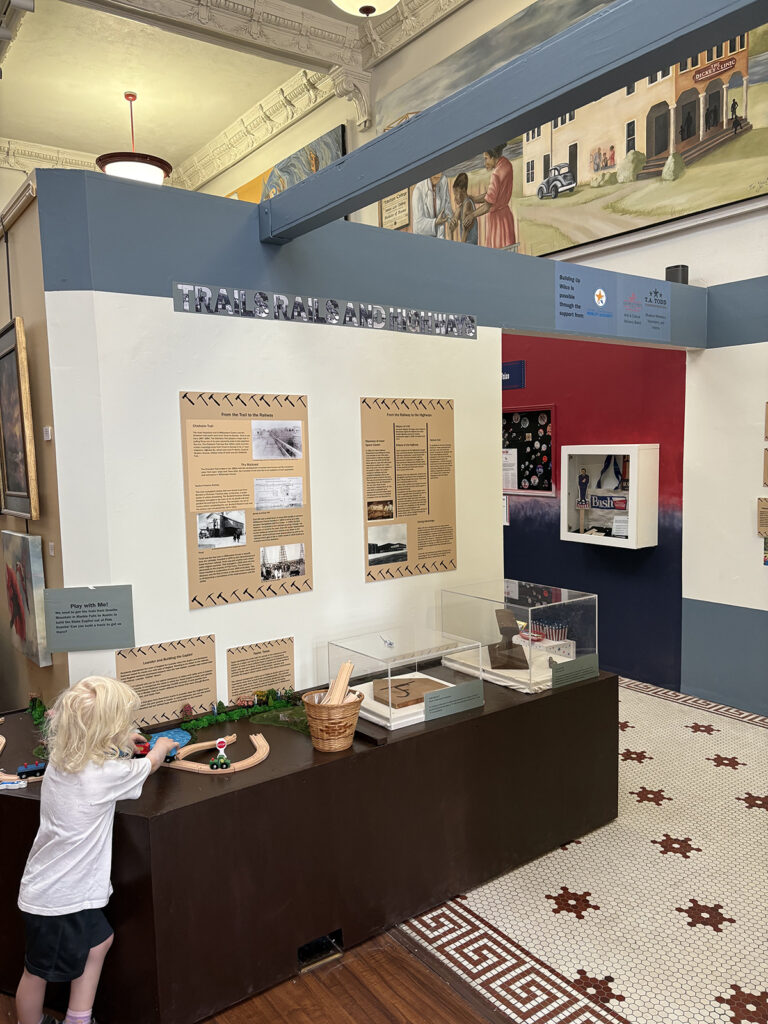New Museum Exhibit Explores 200 Years of Growth
On January 1, 1892, Charles Belford signed a deal to buy out his partner, Moses Harrell, and take full ownership of the Belford Lumber Company. Over time, his lumber would become the backbone of the homes and businesses that anchored Georgetown and other growing Central Texas towns. The Portal to Texas History website calls the company “a well-known and respected business…that built some of the most architecturally and historically significant buildings and homes in Georgetown.”
More than 130 years later, those original purchase documents found a home at the Williamson Museum and are among many displays that tell the story of Williamson County as part of the museum’s new Building Up Wilco exhibit. Curated by Ben Geiger with the help of museum intern Daniel Weinstein, the exhibit explores nearly 200 years of growth, construction, and change across the county. Ben shares, “With our current growth rate being one of the fastest in the country, the Williamson Museum and I wanted to reflect how Williamson County has continued to build since its initial settling in the 1800s. This goes anywhere from what they built with, what they built, who built it, and why they settled in the places they did.”
BRINGING THE PAST TO LIFE
Designed with all ages in mind, the Building Up Wilco exhibit offers interactive elements that allow people to engage with history in a hands-on, play-based learning environment. “It is also a great place for visitors to the Square to take a break from the outside, let their kids play, and have fun with history,” Ben says.
Among the exhibit’s displays are stories that shine a light on the lesser-known challenges early settlers faced–e.g. the process of cutting and hauling stone in the 1800s, which was a far cry from today’s quarry operations. “In the 1800s, they did not have excavators and technology we use in the 2020s. Instead, they did everything by hand and often used mule-drawn carriages to transport the stone.” It wasn’t until the arrival of the railroad that the process sped up significantly, allowing materials to be transported more efficiently, including pink granite from Marble Falls that was used in the construction of the Texas State Capitol.

The railroad didn’t just move materials; it moved people, too–shaping the map of Williamson County in ways that trace its historic roots and modern growth. In fact, entire settlements shifted their locations based on where the tracks were laid. One example is Bagdad, the original settlement near present-day Leander. When the railroad route bypassed Bagdad in favor of Leander, many residents relocated, leaving Bagdad behind as a ghost town. A similar story played out in Corn Hill, where people moved to the newly established town of Jarrell after the railroad created new opportunities there.
STORIES STILL UNFOLDING
Whether you’re a lifelong resident curious about your hometown’s beginnings or a newcomer eager to understand the landscape you’ve joined, Building Up Wilco offers an engaging window into the people and enterprises that have built Williamson County–and continue to shape its next chapter. Ben explains, “It’s a reflective project that asks, ‘How have we built for almost 200 years, and how will we continue to build?’ ”
The Building Up Wilco exhibit will run through March 2027 at the museum located at 716 S. Austin Ave. on the west side of the Courthouse Square. To learn more about the Building Up Wilco exhibit and other upcoming museum events, visit williamsonmuseum.org.
